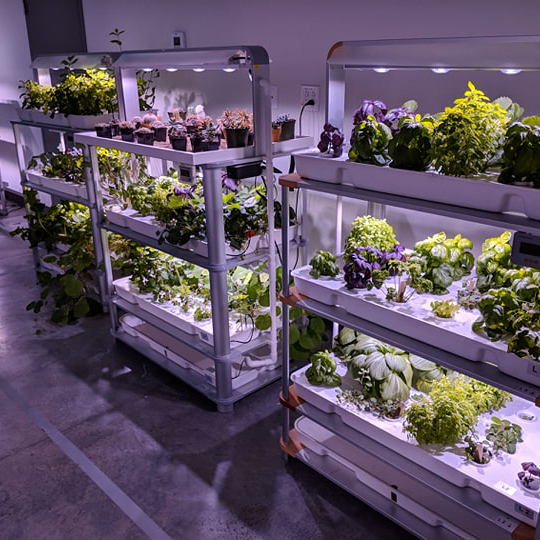My Cart
Your Shopping Cart is currently empty. Use Quick Order or Search to quickly add items to your order!

Ken Bryant
Marketing Director
HYVE™ Indoor Farming Systems
It’s been said that history repeats itself, but sometimes history never really goes away and becomes the present—or more exciting, the future.
Some of the earliest examples of hydroponics date back to the Hanging Gardens of Babylon and the floating gardens of China. Today, hydroponics—the practice of growing plants using water instead of soil—is alive and well and being used to teach, create, inspire, and feed a growing population.
From chefs who use small indoor hydroponics units to grow leafy green vegetables, herbs, and microgreens for their restaurants to large indoor vertical farms that use automation, climate control, and the latest in technology to grow millions of plants per month, hydroponics is the water of life.

Systemic hydroponics offers users the ability to grow fresh, healthy, vibrant plants indoors, 365 days a year. Today’s technology uses LED grow lighting to mimic the sun and power photosynthesis to make crops grow faster and healthier without the need for soil. By eliminating the need for soil, hydroponics conserves vital natural resources such as water (traditional growing takes up to 95% more water because the water is not recycled) and land. It also provides a predictable basis for growing crops.
As the world population increases at a rapid pace, food waste and the inability to deliver food to the right location in a timely fashion means more hungry people. When crops are grown indoors using hydroponics and technology, the crops are produced faster and without the need for harmful pesticides or herbicides. A food supply can be readily available and grown in smaller contained areas, year-round, close to where it is needed. The implications for mitigating hunger all over the world are real. Practically, it also means:
Hydroponics can’t fool Mother Nature, but it can cooperate with her to create a scientific way to grow smartly.
Small hydroponic units are becoming more prevalent as classroom teaching tools. Many STEM attributes can be taught and learned in a setting that is fun, productive, and hands-on. Science, technology, math, communication skills, and teamwork are all a part of the learning experience when classrooms opt to teach a new generation about how plants grow, the effects of nutrients and lighting on plant growth, and where our food supply actually comes from. The smaller units can also form the basis for intentional learning with the goal to train a student to someday work or own a large vertical indoor farm that can help open doors to feed people around the corner or thousands of miles away.
Explore Indoor Farming Systems